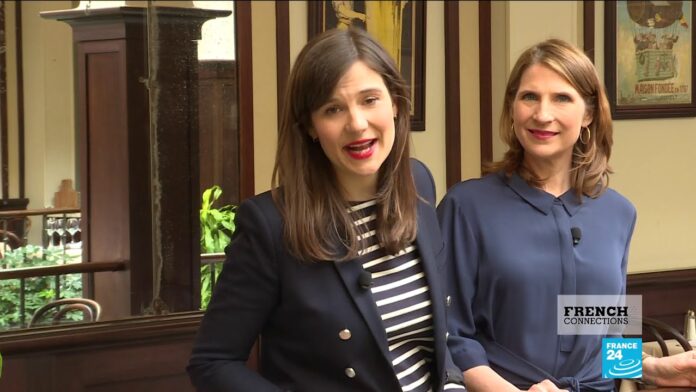Fashion is a constantly evolving industry, reflecting the cultural, social, and economic changes that shape our world. From the extravagant designs of the past to the minimalist aesthetics of the present, the evolution of fashion trends has been a captivating journey. In this blog post, we will explore the fascinating story of how fashion has transformed over the years, the influential decades that have left an indelible mark, the impact of technology, the growing emphasis on sustainability, and the exciting predictions for the future of the industry.
Historical Overview of Fashion Trends
The Early Influences: Ancient Civilizations and the Middle Ages
The roots of fashion can be traced back to ancient civilizations, where clothing and adornments served not only practical purposes but also as a means of conveying social status, cultural identity, and religious beliefs. In ancient Egypt, the elaborate robes and headdresses of the pharaohs were a testament to their power and divinity. Similarly, in ancient Greece and Rome, the draping and tailoring of garments reflected the elegance and sophistication of those civilizations.
The Middle Ages saw a significant shift in fashion, with the emergence of distinct social classes and the establishment of sumptuary laws that dictated what individuals could wear based on their rank and status. The nobility adorned themselves in intricate, heavily embroidered gowns and capes, while the commoners were limited to more utilitarian attire.
The Renaissance and the Opulence of the Baroque Era
The Renaissance period, from the 14th to the 17th century, ushered in a new era of fashion. The influence of the Italian and French courts led to the adoption of more elaborate and ornate styles, with rich fabrics, intricate embroidery, and the use of accessories such as wigs and jewelry. The Baroque period, which followed, further amplified the grandeur of fashion, with extravagant silhouettes, bold colors, and a lavish display of wealth and status.
The Emergence of Modernity: The 18th and 19th Centuries
The 18th century marked a pivotal moment in the evolution of fashion, as the Industrial Revolution and the rise of the bourgeoisie class led to a significant shift in the way clothing was produced and consumed. The emergence of ready-to-wear fashion and the increasing accessibility of fabrics and materials democratized the fashion industry, making it more inclusive and allowing for the development of new styles and trends.
The 19th century saw the rise of the department store and the growth of a vibrant fashion media, which helped to popularize and disseminate the latest trends. This period also witnessed the birth of influential fashion houses, such as Chanel and Dior, which would go on to shape the industry for decades to come.
Influential Fashion Decades

The Roaring Twenties: Embracing Modernity and Rebellion
The 1920s, often referred to as the Roaring Twenties, were a time of profound social and cultural change. In the aftermath of World War I, the world experienced a surge of optimism, economic prosperity, and a desire for liberation. This was reflected in the fashion of the era, which embraced a more rebellious and modern aesthetic.
The iconic flapper dress, with its short hemline, dropped waistline, and accompanying beaded accessories, became a symbol of the era’s defiance of traditional gender norms and social mores. The rise of the “New Woman” and the increasing emancipation of women in the workforce and public spaces were mirrored in the androgynous and liberating fashion choices of the time.
The Glamour and Elegance of the 1930s and 1940s
The 1930s and 1940s saw a shift towards a more refined and elegant aesthetic in fashion. The Great Depression and the looming threat of World War II led to a desire for comfort and stability, which was reflected in the more conservative and structured silhouettes of the era.
The 1930s witnessed the rise of Hollywood glamour, with film stars and starlets showcasing the epitome of sophistication and allure. The bias-cut gown, with its fluid and feminine lines, became a hallmark of the decade, while the broad-shouldered, cinched-waist look of the 1940s echoed the strong, resilient spirit of the times.
The Rebellious Sixties and the Counterculture Movement
The 1960s were a decade of profound social and political upheaval, and fashion was at the forefront of this revolution. The counterculture movement, with its emphasis on individuality, self-expression, and anti-establishment sentiment, was reflected in the diverse and eclectic styles that emerged during this era.
From the mod look, with its clean lines and bold colors, to the hippie aesthetic, with its flowing, psychedelic-inspired garments, the 1960s saw a rejection of traditional norms and a celebration of personal freedom. The mini-skirt, introduced by designer Mary Quant, became a symbol of the era’s youthful rebellion and liberation.
The Excesses of the 1970s and the Disco Era
The 1970s were a decade of both excess and experimentation in fashion. The disco era, with its pulsating music and vibrant nightlife, influenced the emergence of flamboyant and glamorous styles, such as the iconic disco ball-inspired sequined dresses and the bell-bottomed, high-waisted pants.
Alongside the disco aesthetic, the 1970s also saw the rise of punk rock and the DIY ethos, which led to the creation of edgy, rebellious fashion statements. Ripped jeans, safety pins, and leather jackets became symbols of the punk subculture, challenging the status quo and redefining the boundaries of fashion.
The Minimalism and Power Dressing of the 1980s
The 1980s were a decade of contrasts, with fashion trends reflecting the economic and social changes of the time. The early part of the decade saw the rise of minimalist, clean-cut styles, exemplified by the streamlined silhouettes and neutral color palettes of designers like Calvin Klein and Donna Karan.
However, as the decade progressed, the fashion landscape shifted towards a more ostentatious and bold aesthetic. The era of “power dressing” emerged, with women embracing broad-shouldered suits, structured blazers, and bold accessories as a means of asserting their presence in the corporate world.
Impact of Technology on Fashion Trends

The Digital Revolution and the Rise of E-commerce
The digital revolution has had a profound impact on the fashion industry, transforming the way clothing and accessories are designed, produced, and consumed. The advent of e-commerce platforms, such as Farfetch, Net-a-Porter, and Asos, has democratized the fashion industry, making it more accessible to a global audience and allowing for the rapid dissemination of trends.
The rise of social media and influencer marketing has also played a significant role in shaping fashion trends. Platforms like Instagram and TikTok have become powerful tools for fashion brands to showcase their latest collections, collaborate with influential personalities, and engage with their target audiences in real-time.
The Intersection of Fashion and Technology: Innovations in Textile and Production
The fashion industry has also witnessed remarkable technological advancements in textile and production processes. The development of innovative fabrics, such as smart textiles, 3D-printed garments, and sustainable materials, has revolutionized the way designers approach their craft.
Moreover, the integration of artificial intelligence and machine learning in the design and manufacturing stages has streamlined the production process, allowing for greater efficiency, personalization, and customization. These technological innovations have not only transformed the aesthetic of fashion but also paved the way for more sustainable and ethical practices within the industry.
The Emergence of Virtual and Augmented Reality in Fashion
The convergence of fashion and technology has also given rise to the integration of virtual and augmented reality in the industry. Virtual fashion shows, digital clothing, and augmented reality-powered try-on experiences have become increasingly prevalent, offering consumers new and immersive ways to engage with fashion.
These advancements have not only enhanced the shopping experience but have also opened up new creative avenues for designers and brands. The ability to showcase collections in virtual spaces and allow customers to virtually try on garments has the potential to reduce waste, minimize returns, and promote more sustainable consumption patterns.
Sustainability in the Fashion Industry
The Growing Demand for Eco-friendly and Ethical Fashion
The fashion industry has long been criticized for its negative environmental and social impact, from the excessive use of natural resources to the exploitation of garment workers. However, in recent years, there has been a growing awareness and demand for more sustainable and ethical practices within the industry.
Consumers, especially younger generations, are increasingly scrutinizing the sourcing, manufacturing, and disposal of the clothing they purchase. This has led to the rise of eco-conscious brands and the proliferation of sustainable fashion initiatives, such as the use of organic, recycled, and biodegradable materials, as well as the implementation of fair labor practices and transparent supply chains.
The Circular Economy: Embracing Waste Reduction and Recycling
The concept of the circular economy has gained traction within the fashion industry, with a focus on reducing waste, increasing recycling and upcycling, and promoting a more sustainable lifecycle for garments. Brands and designers are exploring innovative ways to repurpose textile waste, create closed-loop production systems, and encourage consumers to adopt more mindful consumption patterns.
The rise of clothing rental services, second-hand marketplaces, and clothing swaps has also contributed to the shift towards a more circular fashion economy, allowing consumers to access and enjoy a variety of styles without the burden of ownership and waste.
The Importance of Transparency and Traceability in the Supply Chain
Transparency and traceability within the fashion supply chain have become increasingly important as consumers demand more accountability from brands. The development of blockchain technology, for example, has enabled the tracing of garments from raw materials to the final product, allowing consumers to make more informed choices about the products they purchase.
Moreover, the increased emphasis on social and environmental impact reporting, coupled with the adoption of sustainability certifications and standards, has pushed the fashion industry to be more transparent about its practices and to continually improve its sustainability efforts.
Future Predictions for Fashion Trends
The Rise of Personalization and Customization
As technology continues to shape the fashion industry, the trend towards personalization and customization is expected to gain even more momentum. Consumers are increasingly seeking unique and tailored garments that reflect their individual style and preferences.
The integration of advanced technologies, such as 3D printing, AI-powered design tools, and on-demand manufacturing, will enable brands to offer more personalized and made-to-order products, catering to the growing demand for bespoke fashion experiences.
The Blurring of Gender Boundaries and Fluid Fashion
The fashion industry has already witnessed a gradual blurring of traditional gender boundaries, with the emergence of gender-neutral and androgynous styles. This trend is expected to continue, as consumers, especially younger generations, embrace a more fluid and inclusive approach to fashion.
Designers and brands will likely explore new ways to challenge gender norms, creating garments and collections that transcend traditional binary classifications and allow for greater self-expression and individuality.
The Increasing Importance of Sustainability and Ethical Practices
The growing emphasis on sustainability and ethical practices within the fashion industry is expected to become even more prominent in the years to come. As consumers continue to demand more environmentally and socially responsible products, brands will be compelled to prioritize sustainable materials, production methods, and supply chain management.
The development of innovative technologies, such as lab-grown textiles, closed-loop recycling systems, and advanced waste management solutions, will play a crucial role in shaping the future of sustainable fashion. Additionally, the adoption of sustainable business models, such as rental and resale platforms, will further drive the industry towards a more circular and eco-friendly future.
Conclusion
The evolution of fashion trends has been a captivating journey, reflecting the cultural, social, and technological changes that have shaped our world. From the extravagant designs of the past to the minimalist aesthetics of the present, the fashion industry has continuously reinvented itself, responding to the demands and desires of consumers.
The influential fashion decades, the impact of technology, the growing emphasis on sustainability, and the exciting predictions for the future all point to the dynamic and ever-evolving nature of the fashion industry. As we move forward, the industry will likely continue to embrace innovation, challenge traditional norms, and offer new and innovative ways for individuals to express their personal style and identity.









